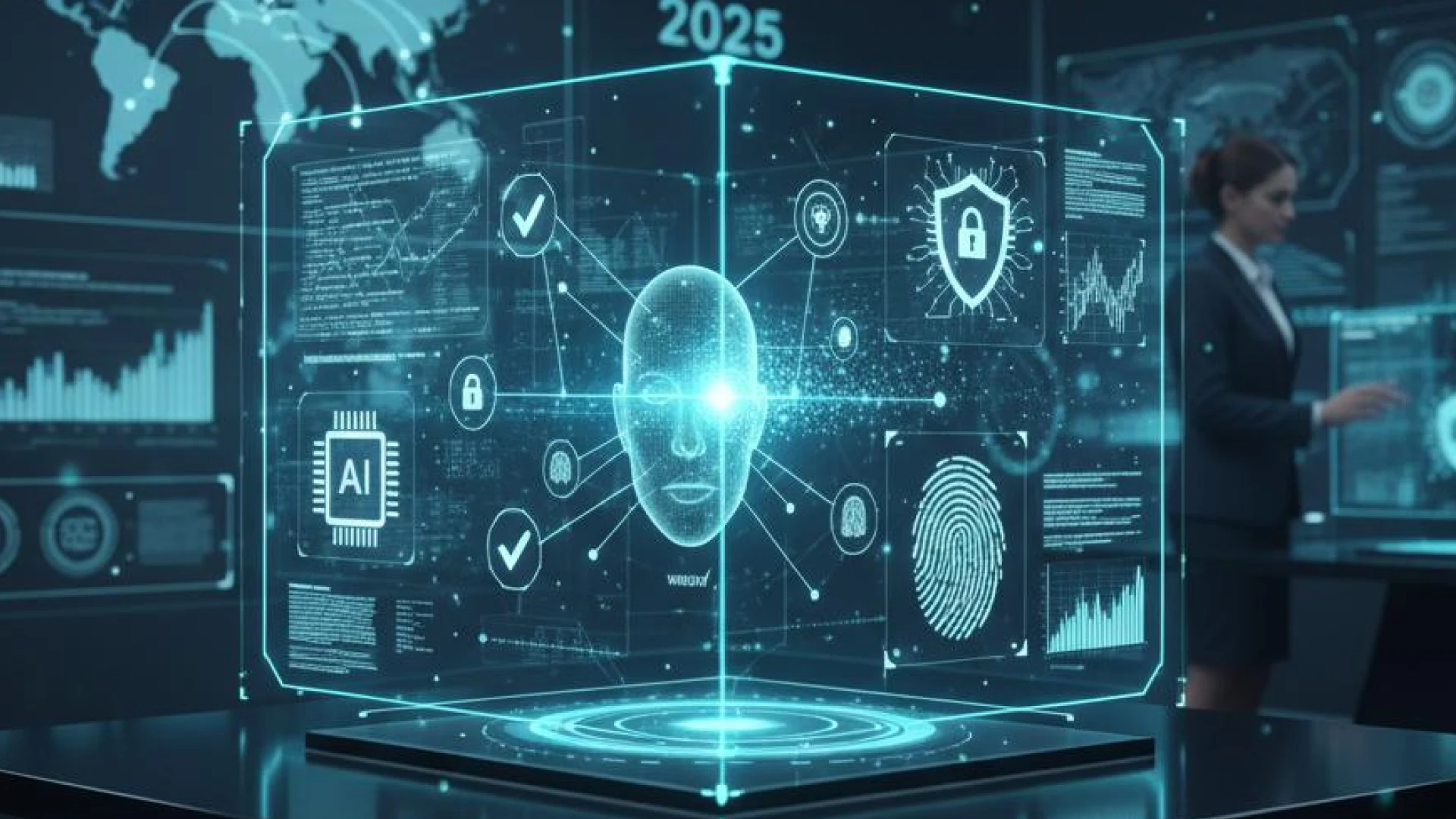
Top Identity Verification Trends for Enterprises in 2025
As enterprises embrace hybrid workforces and digital transformation accelerates, identity verification is becoming more critical than ever. Modern security threats are evolving, and AI-driven attacks are reshaping how organizations validate users. Whether you’re onboarding employees, granting system access, or protecting sensitive data, staying ahead of identity verification trends is essential.
In this article, we’ll explore the top identity verification trends for 2025, from AI threats to decentralized credentials, the impact of NIST 800-63-4 guidelines, and how solutions like Truoco can help enterprises safeguard their operations.
Why Identity Verification Matters More Than Ever
Key Reasons
Identity verification is no longer just a checkbox during onboarding. Organizations face increasing pressure to:
- Protect sensitive data from insider and external threats
- Comply with global regulations like GDPR, CCPA, and emerging identity standards
- Maintain trust with customers and employees
Rising Threats in Interview and Onboarding Fraud
Fraud Risks
Fraud in hiring and onboarding is a growing concern. Candidates may provide fabricated or stolen identities to gain access to enterprise systems. Examples of threats include:
- Deepfake interviews where AI-generated video or voice impersonates a candidate
- Credential manipulation, where unauthorized individuals gain access after onboarding
- Insider threats facilitated by weak verification during hiring
AI-Powered Social Engineering at Help Desks
Help Desk Vulnerabilities
Attackers exploit help desks using AI-driven social engineering to bypass security. Typical attacks include:
- Posing as executives to request password resets
- Mimicking employee communication styles with AI-generated emails or voice calls
- Exploiting urgent or unusual requests to trick support staff
Multi-Factor Verification: The Next Evolution
MFV Features
Multi-factor verification integrates continuous, context-aware identity checks throughout the session:
- Adaptive authentication based on behavior and location
- Biometric verification such as facial recognition or fingerprint scans
- Risk-based verification triggered by anomalies like unusual file access or device changes
NIST 800-63-4 Guidelines and Their Impact
Key Provisions
The draft NIST SP 800-63-4 guidelines introduce stricter standards for identity verification:
- Advanced biometric and document verification for remote onboarding
- Continuous risk assessment during identity-related transactions
- Fraud detection and mitigation during verification processes
Decentralized Identity and Verifiable Credentials
Benefits
Decentralized identity allows employees to hold verifiable credentials in digital wallets:
- Streamlined onboarding and credential recovery
- Reduced reliance on centralized databases vulnerable to breaches
- Faster provisioning of system access and passkeys
Continuous Identity Verification for Enterprises
Enterprise Requirements
Continuous verification ensures:
- Real-time monitoring of user behavior
- Adaptive verification when anomalies are detected
- Balanced security with frictionless access
How Truoco Supports Modern Identity Verification
Platform Features
Truoco provides a comprehensive solution:
- Real-time document and biometric verification
- Adaptive risk assessment for continuous authentication
- Fraud detection using AI-powered analytics
- Compliance support for global standards including GDPR, KYC, and AML
Best Practices for Enterprise Identity Verification
Recommendations
Enterprises should consider:
- Automated identity proofing for onboarding and remote workforces
- Risk-based, continuous verification to detect anomalies
- Integration of decentralized credentials for secure and efficient access
- Vendor selection prioritizing compliance, scalability, and support
Future Outlook for Identity Verification
Emerging Trends
The future will emphasize:
- AI-powered verification tools for deepfake and synthetic identity detection
- Broader adoption of multi-factor verification as a standard
- Increased reliance on decentralized credentials
- Integration with overall risk and compliance management systems
The organizations that embrace these trends early will gain a competitive edge, reduce operational risk, and build greater trust with employees and clients.
Conclusion
Identity verification is entering a new era in 2025. Threats are more sophisticated, regulations are tighter, and user expectations demand seamless experiences. Enterprises must adopt multi-factor verification, AI-aware security, decentralized credentials, and continuous monitoring to protect their digital environments.
Truoco provides the technology backbone to implement these strategies effectively, enabling organizations to stay secure, compliant, and competitive.
For businesses looking to start or scale identity verification processes, Truoco offers enterprise-grade solutions to protect employees, customers, and sensitive systems while maintaining a frictionless experience.
Frequently Asked Questions About Identity Verification
What is multi-factor verification (MFV)?
MFV is an advanced authentication process that continuously validates identity using multiple factors, including behavior, biometrics, and contextual risk signals.
How does Truoco enhance identity verification?
Truoco provides real-time document and biometric checks, fraud detection, and compliance automation, ensuring secure and seamless verification.
What is decentralized identity?
Decentralized identity allows users to store verifiable credentials in digital wallets, reducing reliance on centralized databases and streamlining access management.
Why is continuous identity verification important?
Continuous verification monitors user behavior in real time to detect anomalies, reducing the risk of compromised credentials and insider threats.
What are the key risks in onboarding fraud?
Fraud risks include fake documents, impersonation, deepfakes, and stolen credentials during hiring and onboarding processes.
How does AI impact identity verification?
AI both enhances verification through pattern recognition and presents risks, such as AI-generated deepfakes used for impersonation.
What are the NIST 800-63-4 guidelines?
These are federal guidelines updating identity proofing and verification standards, emphasizing remote onboarding, risk assessment, and fraud detection.
How can enterprises prepare for future identity verification challenges?
By adopting adaptive verification, decentralized credentials, continuous monitoring, and trusted platforms like Truoco.